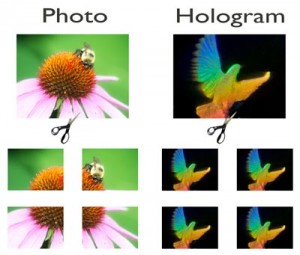Humans are required to make snap judgments that still humble the best computers in existence today. The best way to accomplish this might be to utilize the inherent immediacy of resonant circuits. A problem can be recognized and associated thoughts can be retrieved with little or no computation. When recognizing a lion and settling on an escape route, it’s better to have speed than highly accurate computations.
As we’ve seen with the example of the tuning forks, resonance is pretty much immediate. As soon as a fork (or a neural circuit) gets the input, it starts to resonate, or ring. It is a driven harmonic oscillator and all the circuits tuned to the input frequency will ring simultaneously, while the circuits that aren’t so tuned will stay quiet.
The speed with which animals can recognize and act on input is one of the greatest challenges in neural simulations. All of our attempts to throw computing power at the problem are still far too slow to achieve the results of even the lowliest fly. The beauty of resonant memory is that computation is not even required: a circuit can start to resonate within milliseconds, and any correlated information can be retrieved in the same time frame.
Any theory of cognition or memory must take this speed into account, especially given that the fastest neurons are limited to less than 400 km/s, far slower than the speed of electrons in a circuit. Whatever is happening in our squishy brains is faster than the current crop of AI algorithms can handle.
A related speed problem is the converse of recognition: knowing that you don’t recognize something. If I ask you what you know about “tachyon snails”, you will quickly say that you’ve never heard of them. The feeling that you don’t know something is one of the fastest and easiest chores for the mind to accomplish. In contrast, it is the hardest thing for a computer to do. Google has to exhaustively search it’s entire database to find out that it doesn’t know about “tachyon snails” (okay, that’s a weird search, but it’s hard to come up with something that Google doesn’t have on tap). But you and I know instantly that we have no knowledge of such a creature.
Because resonance is immediate, if you don’t get a signal you can be assured that the information doesn’t exist. Simple and fast. Whatever humans do, it is not like a typical computer search. Resonant memory fits this observation well.

